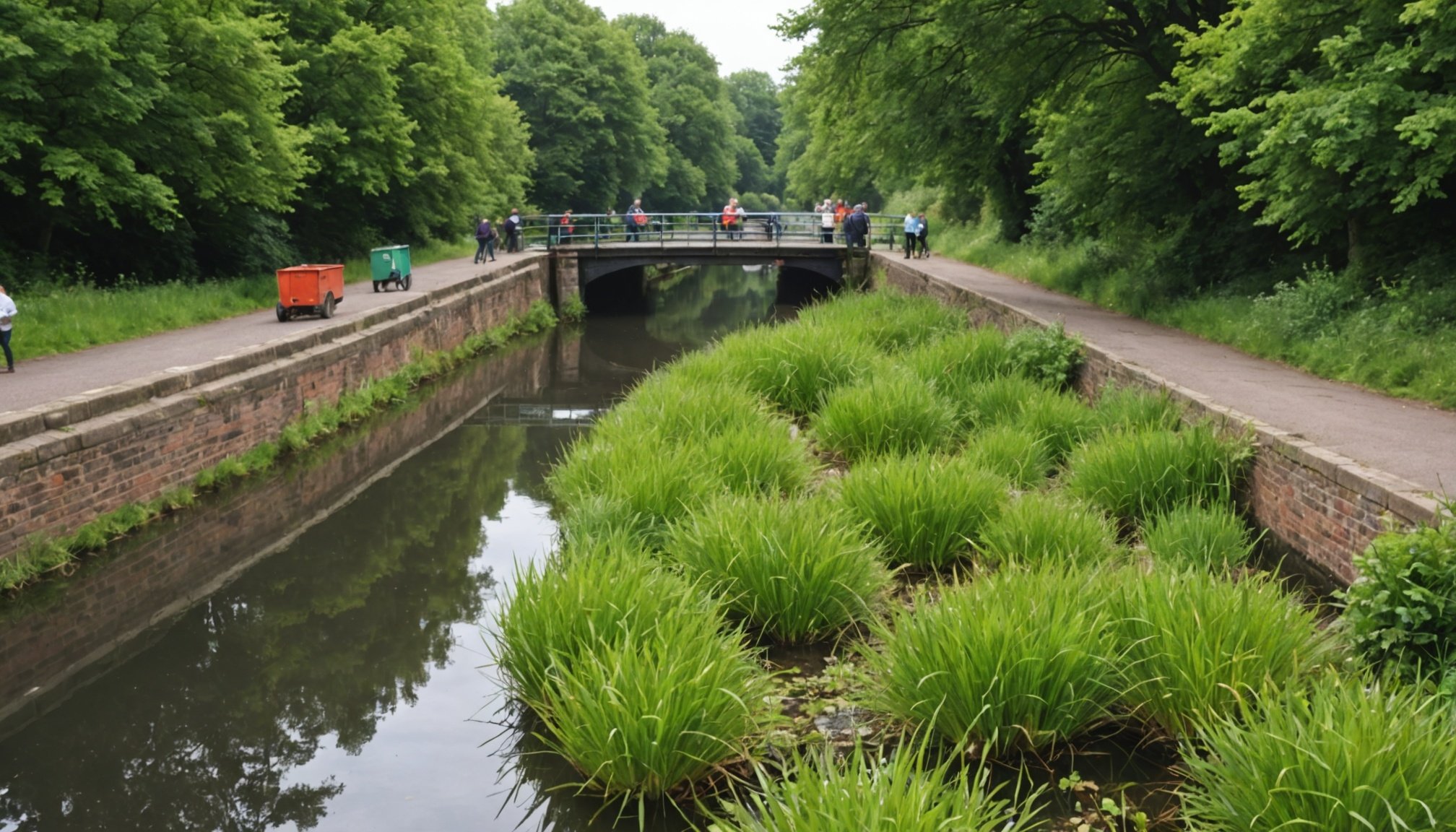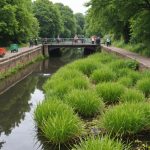Reviving Urban Ecosystems: The Impact of UK’s Canal Restoration Projects on Biodiversity
The Importance of Urban Waterways
Urban waterways, including canals and rivers, have long been overlooked as mere relics of industrial pasts, but they hold a significant potential for revitalizing urban ecosystems. In the UK, a growing emphasis on environmental conservation and biodiversity has led to a surge in canal restoration projects. These initiatives are not just about restoring old infrastructure; they are about creating vibrant, natural habitats within the heart of urban areas.
Professor Zoe Davies, a leading expert in biodiversity conservation at the University of Kent, highlights the importance of urban green and blue spaces in improving human health and wellbeing. “Urban green and blue spaces can benefit human health and wellbeing through various mechanisms, such as reducing physiological stress and restoring attentional capacity,” she notes. This underscores the multifaceted benefits of restoring urban waterways.
En parallèle : Unlocking the Rewards of Wildlife Conservation Volunteering in the UK: Why You Should Get Involved!
The Restoration Process
Restoring canals and rivers involves a complex process that goes beyond mere physical renovation. It requires a deep understanding of ecological restoration, land use, and the environmental impact of human activities.
Ecological Restoration
Ecological restoration aims to return degraded or damaged ecosystems to a healthy, functioning state. In the context of canal restoration, this involves allowing rivers to flow naturally through their floodplains, as seen in the Somerset floodplain restoration project. By doing so, these projects restore ecosystem functions and services, such as water filtration, flood defense, and carbon storage[3].
Lire également : Essential Insights for UK Pet Owners: How Nature Reserve Walks Can Affect Local Wildlife
Community Involvement
Community involvement is crucial for the success of these projects. The West of England’s Local Nature Recovery Strategy, for example, engages local communities in reversing biodiversity loss and creating healthier, more resilient communities. This willingness to participate and pay for conservation efforts is a key factor in the long-term sustainability of these projects[2].
Benefits of Canal Restoration
The benefits of canal restoration are numerous and far-reaching, impacting both the environment and the community.
Environmental Benefits
- Biodiversity Conservation: Restoration projects can lead to the reintroduction of species that were once extinct in the area. For instance, the return of pine martens to Dartmoor after over 100 years is a testament to the positive impact of conservation efforts[4].
- Ecosystem Services: Restored canals and rivers provide essential ecosystem services, including water filtration, flood risk reduction, and carbon storage. Scotland’s record restoration of 10,360 hectares of peatland is a prime example of how these efforts can enhance biodiversity and environmental resilience[4].
- Climate Change Mitigation: By restoring natural habitats, these projects help mitigate the effects of climate change. For example, the Northern Forest project, which has planted nearly eight million trees, not only increases woodland areas but also helps in carbon sequestration[4].
Community Benefits
- Health and Wellbeing: As mentioned by Professor Zoe Davies, urban green and blue spaces can significantly improve human health and wellbeing. Restored canals often become recreational spaces, promoting physical activity and mental health.
- Economic Benefits: Restored canals can increase the value of surrounding areas, making them more attractive for residents and businesses. A study on the willingness to pay for canal restoration highlights the economic benefits of such projects, as communities are often willing to invest in environmental improvements that enhance their quality of life.
- Educational Opportunities: These projects provide valuable educational opportunities, teaching communities about the importance of conservation and the functions of ecosystem services.
Case Study: The Somerset Floodplain Restoration
The Somerset floodplain restoration project is a compelling example of the impact of ecological engineering on urban ecosystems.
Project Overview
This project involves allowing rivers to flow naturally through their floodplains, restoring ecosystems and strengthening resilience to climate change. By doing so, it enhances biodiversity, improves water quality, and reduces flood risk.
Key Outcomes
- Biodiversity Increase: The project has led to a significant increase in biodiversity, with various species returning to the area.
- Flood Risk Reduction: By restoring natural floodplains, the project has reduced the risk of flooding, protecting both the environment and local communities.
- Community Engagement: The project has engaged local communities in conservation efforts, fostering a sense of ownership and responsibility for the restored areas.
Practical Insights and Actionable Advice
For those interested in contributing to or initiating canal restoration projects, here are some practical insights and actionable advice:
Engage with Local Communities
- Community involvement is crucial. Engage with local residents, businesses, and schools to build support and participation.
- Conduct workshops and educational programs to raise awareness about the importance of conservation and the benefits of restored canals.
Collaborate with Environmental Agencies
- Work closely with environmental agencies such as the Environment Agency and local Rivers Trusts to ensure that the restoration aligns with broader conservation goals.
- Utilize their expertise in ecological restoration and land use planning.
Secure Funding
- Explore various funding options, including government grants, private donations, and community fundraising events.
- Highlight the economic benefits of restoration projects to attract investors and supporters.
The restoration of canals and rivers in the UK is a beacon of hope for urban biodiversity conservation. These projects not only restore ecosystem functions and services but also enhance community health, wellbeing, and economic prosperity. As we move forward, it is essential to continue this momentum, engaging communities, collaborating with environmental agencies, and securing the necessary funding to ensure the long-term success of these initiatives.
Detailed Bullet Point List: Key Benefits of Canal Restoration
-
Environmental Benefits
-
Biodiversity conservation through the reintroduction of extinct species
-
Enhancement of ecosystem services such as water filtration, flood defense, and carbon storage
-
Mitigation of climate change effects through natural habitat restoration
-
Improvement in water quality
-
Reduction in flood risk
-
Community Benefits
-
Improvement in human health and wellbeing through access to green and blue spaces
-
Economic benefits through increased property values and local business growth
-
Educational opportunities for communities on conservation and ecosystem services
-
Recreational spaces promoting physical activity and mental health
-
Economic Benefits
-
Increase in property values surrounding restored canals
-
Growth in local businesses due to enhanced environmental attractiveness
-
Job creation in conservation and restoration sectors
-
Potential for eco-tourism development
Comprehensive Table: Comparison of Restoration Projects
| Project | Location | Key Outcomes | Environmental Impact | Community Engagement |
|---|---|---|---|---|
| Somerset Floodplain Restoration | Somerset, England | Biodiversity increase, flood risk reduction, improved water quality | Restoration of natural floodplains, enhancement of ecosystem services | High community engagement, educational programs |
| Northern Forest Project | Northern England | Planting of nearly 8 million trees, carbon sequestration, increased woodland areas | Significant reduction in carbon emissions, improved air quality | Community involvement in tree planting, educational workshops |
| West of England Local Nature Recovery Strategy | West of England | Reversal of biodiversity loss, creation of healthier communities | Enhancement of ecosystem services, improved land use planning | Strong community involvement, local partnerships |
| Pine Marten Reintroduction | Dartmoor, England | Return of pine martens after over 100 years, biodiversity increase | Restoration of natural habitats, balance of ecosystem | Community support and monitoring, educational programs |
Relevant Quotes
- “Urban green and blue spaces can benefit human health and wellbeing through various mechanisms, such as reducing physiological stress and restoring attentional capacity.” – Professor Zoe Davies[1]
- “By allowing rivers to flow naturally through their floodplains, the project showcases an approach that restores ecosystems and strengthens resilience to climate change.” – Somerset Floodplain Restoration Project[3]
- “The project has led to a significant increase in biodiversity, with various species returning to the area.” – Somerset Floodplain Restoration Project[3]
By understanding the complexities and benefits of canal restoration, we can better appreciate the role these projects play in reviving urban ecosystems and promoting a healthier, more sustainable future.











